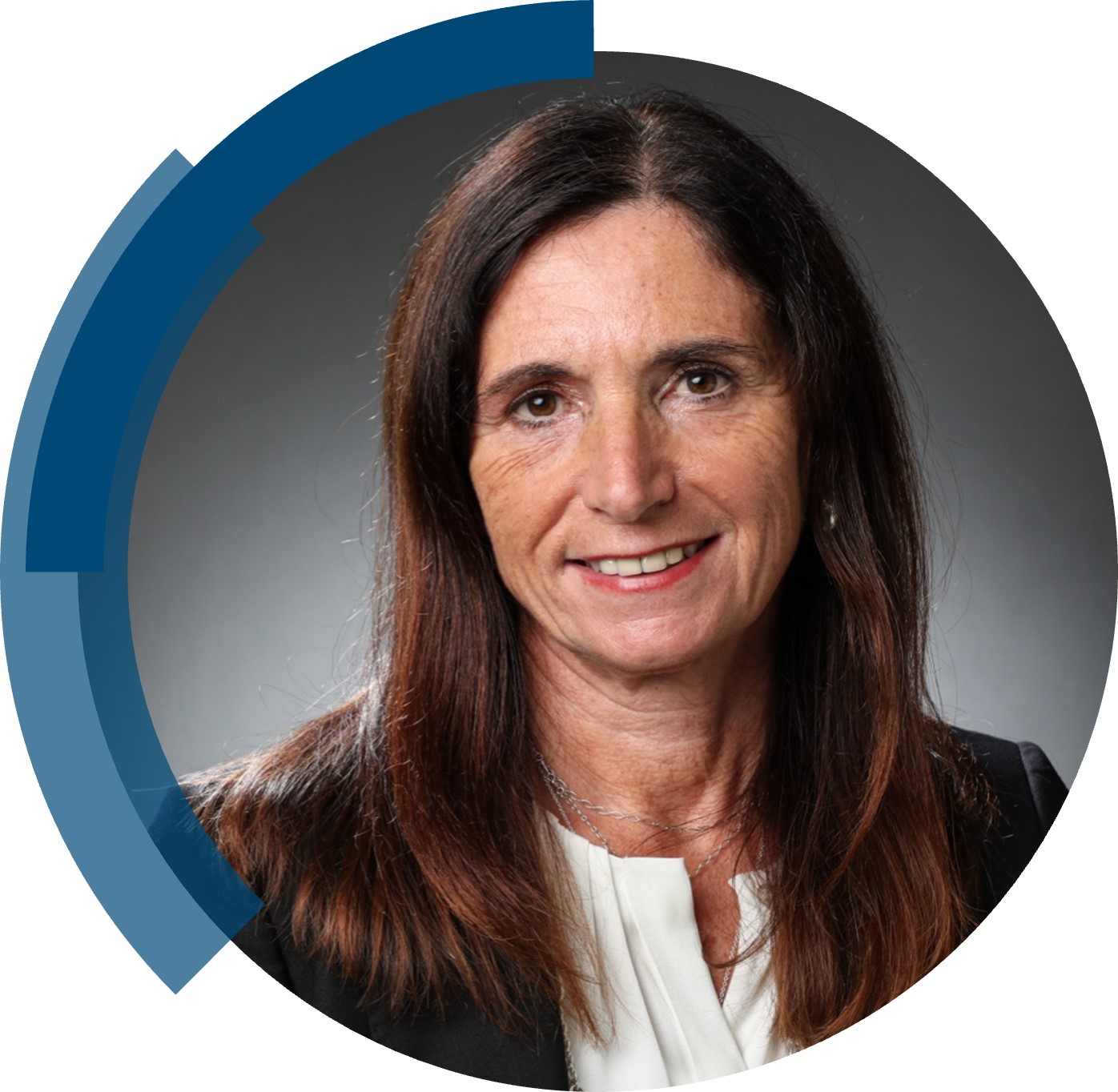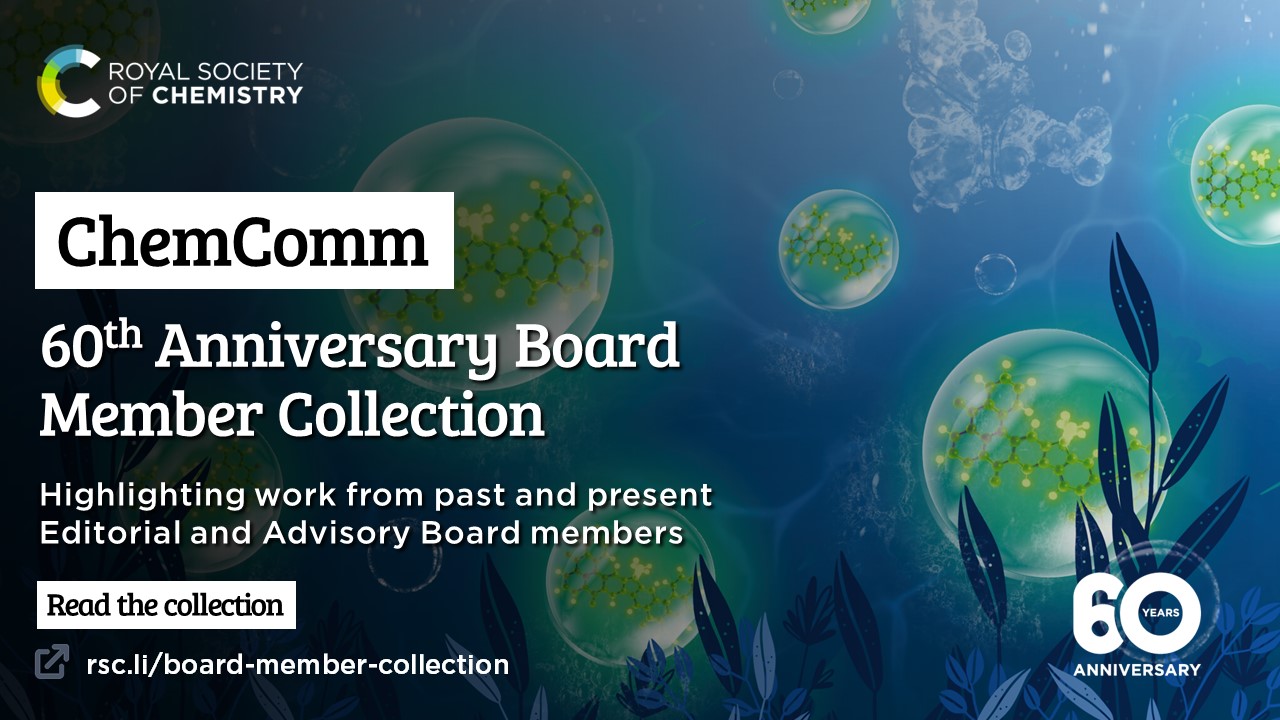Chemical Communications will be publishing its 60th volume in 2024. Over the past 60 years, ChemComm has been the RSC’s most cited journal, and one of the most trusted venues for rapid publication of short communications. In our anniversary year, we recognise the important contributions ChemComm has made, and continues to make, in advancing the chemical sciences.
As part of these celebrations, we’ve brought together a special collection highlighting the latest work from the pioneering researchers who have supported the journal in reaching this milestone by serving on ChemComm’s Editorial and Advisory boards in the last two decades. Throughout the year, we’ll be catching up with these current and former Board Members to discuss their work and reflect on ChemComm’s 60th anniversary. Check out our interviews with current Associate Editor, Professor Marinella Mazzanti, and Advisory Board member, Professor Silvia Marchesan, below!
 |
Marinella Mazzanti was born in Vinci, Italy. She obtained a Master’s degree from the University of Pisa in 1985 and a PhD from the University of Lausanne in 1990. Shortly after she moved as a post-doc to the University of California, Berkely, before moving to the University of California, Davis. In 1994 she was awarded a Marie-Curie fellowship to work at the French National Laboratory, CEA, in Grenoble. In 1996 she took a research scientist and team leader position at the CEA Grenoble. In September 2014 she joined the EPFL as a Professor and founded the Group of Coordination Chemistry. Her research activities have been centered on f element coordination and supramolecular chemistry, redox reactivity, and small molecule activation.
She received the 2021 F. Albert Cotton Award in Synthetic Inorganic Chemistry and the LeCoq de Boisbaudran Senior Award in 2023. |
What attracted you to the role as Editorial Board Member for ChemComm?
The possibility to contribute to the journal with my experience and the potential to attract more members of my community to publish in the journal. ChemComm is the journal where my very first work was published as a PhD student 40 years ago (J. Chem. Soc., Chem. Commun., 1984, 1116-1118) and that created a long lasting connection.
What is your favourite thing about ChemComm?
The possibility of sharing very quickly urgent results and the competence and efficiency of the editorial stuff.
In what ways do you think ChemComm stands out among other journals in your field?
ChemComm has remained faithful to its original mission and gives the possibility to share important and impactful discoveries without wrapping up every single possible experiment. The format renders it a very accessible read that allow to attract attention to a single result
Could you provide a brief summary of your recent ChemComm publication?
We isolated the first example of a trinuclear U(III) complex showing magnetic exchange and reported a rare magneto-structural study for a uranium system. Moreover, preliminary reactivity studies showed that the isolated trinuclear U(III) complex promotes the reduction of one molecule of dinitrogen in the presence of an external reducing agent. These studies demonstrate the versatility of the silsesquioxane scaffold for assembling polymetallic complexes of low valent uranium that possess unusual properties.
In your opinion, what are the next steps or potential areas of research that could build upon the findings in this paper?
The findings presented in this paper should stimulate the use of polydentate siloxides to build polynuclear complexes of uranium both for dinitrogen functionalization or for the development of uranium based single molecule magnets leading to important step forward in both fields.
Read Marinella’s full Communication here: A trinuclear metallasilsesquioxane of uranium(iii) by Maxime Tricoire, Nadir Jori, Farzaneh Fadaei Tirani, Rosario Scopelliti, Ivica Živković, Louise S. Natrajan and Marinella Mazzanti
What attracted you to the role as Editorial Board Member for ChemComm?
ChemComm gave me the opportunity to publish my first work as corresponding author on what then became my main research line. I truly enjoyed the constructive peer-review process and since then my desire grew to support the journal and emerging PIs in a similar way.
How have you seen ChemComm evolve over the years, and what aspects do you find most noteworthy?
I appreciate ChemComm‘s simple format and speedy publishing process. Through the years it maintained its leading role in publishing concise and effective communications across the chemical sciences, giving more and more visibility to emerging PIs through Feature papers and Highlights. This is important to grow and shape the community and the leaders of the future.
What is your favourite thing about ChemComm?
ChemComm embraces diversity and is an inclusive journal that strives to present research voices from all over the world, regardless of country, nationality, gender, or specific research line. This is very important to ensure that every chemist with a brilliant idea gets the chance to grow as a PI.
In what ways do you think ChemComm stands out among other journals in your field?
The 4-page format and the wide readership of ChemComm make it an ideal journal to rapidly publish fresh ideas in a simple process. The number of referees involved in peer-review is consistent and appropriate. I have had articles in other journals being reviewed by as many as 5 referees and through iterative revisions that delayed the publication of our research by several months, if not years!
Are there ways in which the journal can further support and engage with future generations of scientists?
Ensuring the presence of ChemComm on the communication platforms and events where there is a large presence of junior chemists is an effective strategy as well as encouraging their active interaction with ChemComm. Associating ChemComm with their recognition, for instance through poster and student prizes, will certainly remind them of the opportunity to publish their best research results in ChemComm.
Could you provide a brief summary of your recent ChemComm publication?
The design rules for self-assembling simple molecules have been emerging recently, but often scientists are baffled by an unexpected macroscopic outcome, e.g., a crystal as opposed to a gel. This work reveals how that process is determined by the molecular conformations visited in aqueous solution, specifically depending whether they are folded or extended. We can expect opposite behavior in organic solvents, as described by Steed and colleagues using different techniques (doi:10.1039/D3SC03841F).
In your opinion, what are the next steps or potential areas of research that could build upon the findings in this paper?
In our work we specifically analyzed dipeptides with hydrophobic sidechains. It would be very interesting to study how general is the process, depending not only on the nature of the gelator and the solvent, but also on the molecular size and type of design. High value lies in the identification of spectroscopic signatures that can be quickly assigned to specific conformers, so as to easily predict which type of solid will arise from self-assembly.
Read Silvia’s Communcation article here: Diverging conformations guide dipeptide self-assembly into crystals or hydrogels by M. Monti, E. Scarel, A. Hassanali, M. Stener and S. Marchesan













